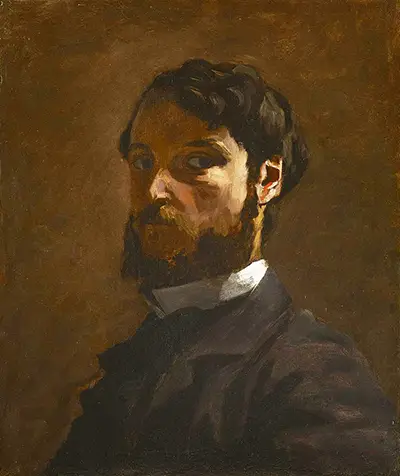Frederic Bazille was a highly skilled but less famous member of the Impressionist art movement whose paintings included a variety of figurative work with some still life and landscape scenes.
Each and every member of the Impressionist movement played their own part in it's success, specialising in different genres which together provided an exceptional array of inspiring, groundbreaking art. Bazille himself had the additional task of financially supporting some of his colleagues from time to time, including allowing Renoir and Monet to share his studio at one point. He was financially secure and able to provide assistance as and when required by the other members of this movement who was under more pressure to turn public interest into genuine sales. In a way, perhaps we can compare Bazille to Gustave Caillebotte, someone on the fringes of fame but who nonetheless played a key role in putting together the early Impressionist exhbitions around Paris.
Frederic Bazille followed the Old Masters from previous art movements and attempted to recreate some of their figurative work within the style and setting of modern day France. Scène d'été is perhaps the finest example of this, with several of the poses being taken directly from religious paintings of the Renaissance. This particular painting was from the early part of Bazille's career, which showed in some of its crude components, but there are also signs of the early promise that would later develop into an impressive oeuvre.
In-sync with the Impressionists as a whole, colour was a key quality of Bazille's work and we can only imagine what he may have gone on to achieve were it not for his premature death during the Franco-Prussian War. It was perhaps the shortening of his career that contributed to his position only on the fringes of this group, in terms of notoriety and academic approval. In most cases it is the artist's work towards the end of his career, where his development and experimentations have been completed, that his best work arrives but we were sadly denied this period of work from Frederic Bazille.
Bazille's artistic career began and ended in his twenties after a move to Paris in 1862. It was here that he met the lies of Renoir and Sisley who drew him towards a career in painting after his earlier studies did not prove fruitful. Even in just the short time in which he was active, we can see clear improvements in his work as he developed his technical and compositional qualities. His most famous painting of all, The Family Reunion, came in the late 1870s, just before his passing. The strong artistic connections that he held would also provide content for his work, such as the portrait of Pierre-Auguste Renoir that can be found here.





 Frederic Bazille.jpg)




























